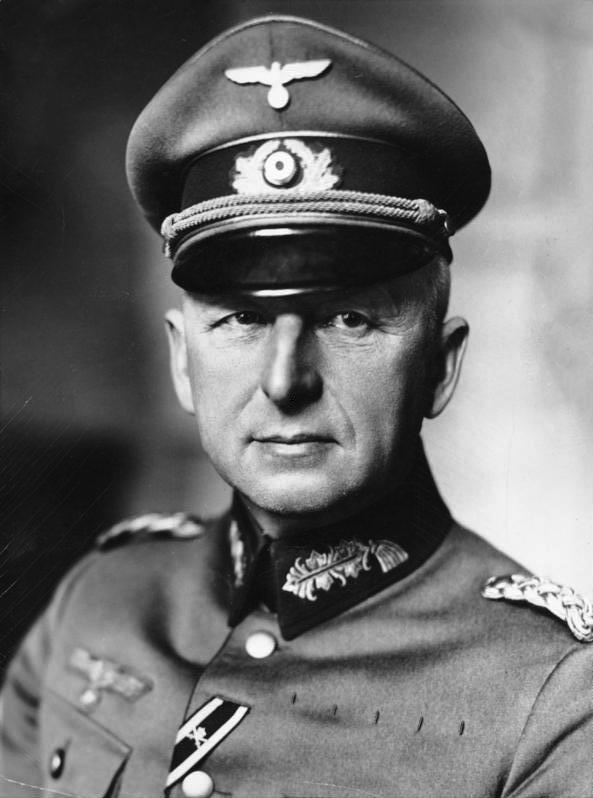Mitsuru Ushijima: The Mountain Fox
May 17, 2021 13:58:44 GMT
John Marston, Luigi Sansonetti, and 1 more like this
Post by Gerd von Rundstedt on May 17, 2021 13:58:44 GMT
This is the life and times of Mitsuru Ushijima, commander of the Eighth Army of Okinawa. He was born into a minor samurai family on July 31 1887 in Kagoshima. They soon moved to Tokyo, but when his father died, they moved back to Kagoshima. He went into the IJA Academy, and was renowned for his swordsmanship. He then continued his schooling in the Army Staff college, and graduated in 1916, with Tomoyuki Yamashita. He was involved in the Siberian Intervention against Bolshevik Forces in the Russian Revolution, and developed a longstanding hatred for communism. He then became a teacher of the Army Infantry School. He was noted for being progressive in his discipline of his students, and even (although it may not seem so astounding for us today) told his subordinates not to beat their students. He was also highly apolitical, in a time period where political generalship was rising, and was promoted to lieutenant colonel. After the February 26 incident, a coup d'etat within the ranks of the young staff officers, he was sent to Manchukuo to guard the border (a punishment job), despite the fact that he was in China the entire time. When the Second Sino-Japanese War erupted, he was promoted to M. General and placed in charge of the 36th Inf Brigade, where he was known for leading from the front, and was ordered to destroy three divisions of China's 14th Army, considered by many to be one of the most professional in the Chinese Forces. This he did successfully, but with high casualties. He was also well known for leading from the front at all times. His brigade then helped take Shanghai, and captured a large amount of soldiers retreating to Nanking. After this, they were caught in the stalemate that was the Battle of Wuhan. He was then, in March 1939, ordered back to Japan, promoted to L. Gen, and assigned to garrison duty at Hulin, Manchukuo, this time not on Punishment.  He was recalled in October 1941 to teach at the IJA Academy, and completely shocked by Pearl Harbor, for he believed that it would hurt the war with China, and end chances for a war with the Soviet Union, who he believed was the number one enemy of Japan. For his vocal opposition, he was removed from his position, but at the request of many, he was reinstated, and promoted to commandant of the entire Academy. Despite his wish to continue to teach, he was put in charge of the garrison at Okinawa. Here, he decided that the Americans were assured a spot on the beach with their naval and air support, and that it would be futile to waste lives there. Here is a map of it:
He was recalled in October 1941 to teach at the IJA Academy, and completely shocked by Pearl Harbor, for he believed that it would hurt the war with China, and end chances for a war with the Soviet Union, who he believed was the number one enemy of Japan. For his vocal opposition, he was removed from his position, but at the request of many, he was reinstated, and promoted to commandant of the entire Academy. Despite his wish to continue to teach, he was put in charge of the garrison at Okinawa. Here, he decided that the Americans were assured a spot on the beach with their naval and air support, and that it would be futile to waste lives there. Here is a map of it:

As you can see, the only stretch of coast not covered with mountains is the little beach between Naha and Urasoa. Ushijima decided to put a decoy force up in the north to draw the Americans away from the south so he could build his defenses along the Shuri line, or the belt that goes from Naha to Yomaharu. The northern contingent were to retreat further and further north, until they split, with one going into The Metobu peninsula, and the other settling in for a defense of Ada. Tis gave him time to organize his defenses, and he made 4 lineds of defense, with the Shuri line at the front. While he certainly did not approve of Banzai charges, like his predecessor, Tadamichi Kuribayashi, he also was fine with suicide attacks, and he made a major counteroffensive after the Shuri Line fell that may have compromised the second line of defense. After the island was about to fall, he committed Hara-Kiri. He was able to use the mountainous terrain to his advantage.
 He was recalled in October 1941 to teach at the IJA Academy, and completely shocked by Pearl Harbor, for he believed that it would hurt the war with China, and end chances for a war with the Soviet Union, who he believed was the number one enemy of Japan. For his vocal opposition, he was removed from his position, but at the request of many, he was reinstated, and promoted to commandant of the entire Academy. Despite his wish to continue to teach, he was put in charge of the garrison at Okinawa. Here, he decided that the Americans were assured a spot on the beach with their naval and air support, and that it would be futile to waste lives there. Here is a map of it:
He was recalled in October 1941 to teach at the IJA Academy, and completely shocked by Pearl Harbor, for he believed that it would hurt the war with China, and end chances for a war with the Soviet Union, who he believed was the number one enemy of Japan. For his vocal opposition, he was removed from his position, but at the request of many, he was reinstated, and promoted to commandant of the entire Academy. Despite his wish to continue to teach, he was put in charge of the garrison at Okinawa. Here, he decided that the Americans were assured a spot on the beach with their naval and air support, and that it would be futile to waste lives there. Here is a map of it: 
As you can see, the only stretch of coast not covered with mountains is the little beach between Naha and Urasoa. Ushijima decided to put a decoy force up in the north to draw the Americans away from the south so he could build his defenses along the Shuri line, or the belt that goes from Naha to Yomaharu. The northern contingent were to retreat further and further north, until they split, with one going into The Metobu peninsula, and the other settling in for a defense of Ada. Tis gave him time to organize his defenses, and he made 4 lineds of defense, with the Shuri line at the front. While he certainly did not approve of Banzai charges, like his predecessor, Tadamichi Kuribayashi, he also was fine with suicide attacks, and he made a major counteroffensive after the Shuri Line fell that may have compromised the second line of defense. After the island was about to fall, he committed Hara-Kiri. He was able to use the mountainous terrain to his advantage.







